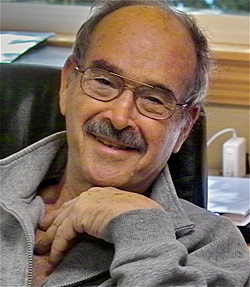More About Hakomi
Hakomi is the name given to a body-centred psychotherapy practice. It helps people to practice loving presence, study themselves, in a mindful way, in order to reveal habits, or ways we organize ourselves in the world.
The reason this becomes interesting, is that we often become aware of our belief systems, see habits that can lead us to suffering unnecessarily. With the practice of Hakomi we can gain more choice and feel more freedom in our everyday life.

Ron Kurtz
Ronald Kurtz was born in 1934 in Brooklyn, New York. He had a vast scientific background, which he incorporated in his therapeutic practice. He studied both English and physics, as well as computer electronics before pursuing his degree in psychology from Indiana University. Kurtz taught at Indiana University, and later taught at San Francisco State College. He was a resident at the Esalen Institute as well. Kurtz developed Hakomi Therapy, a blend of western and eastern psychology, integrating mindfulness and somatic techniques.
Hakomi Therapy is founded on the field of complex living systems. Kurtz was one of the original founders of the United States Association for Body Psychotherapy. He received the Lifetime Achievement Award from that organization in 2008 and was recognized for his accomplishments by the Santa Barbara Graduate Institute with an honorary doctorate. Ron’s passing in 2011 left a legacy of knowledge about the Hakomi method.
Hakomi Ireland Events
Our workshops take place the Irish countryside amid forests and lakes ~ to find out more click the button.
More Info
Key Assumptions
Hakomi Therapy is based on a few key assumptions:
- As we develop from infancy to childhood to adulthood, we organize our experiences by applying meaning to them, to the world, and to ourselves;
- These organizational decisions come to operate as unconscious “core beliefs” about the world and our place in it which govern how we think, feel, develop, act, respond, and create. These core beliefs limit our ability to function spontaneously.
- The purpose of therapy is to become fully human, alive, spontaneous, open-hearted and caring, with the ability to be equally effective acting in interdependence with the world or autonomously.
Principles For Human Interaction
Mindfulness means looking inward, being aware of feelings and sensations in this present moment, with confidence that in each present moment we have a living example of how we habitually organize our minds, bodies, and worlds. By attending meditatively to current mental and physical experience, we illuminate unconscious processes with new awareness which accesses and changes the deeply held unconscious beliefs that drive our thoughts, feelings, and behaviour.
Nonviolence means accepting with compassion that our defense mechanisms arose naturally out of a desire to avoid pain. By supporting defenses, by going slowly, and by avoiding judgments, we make space for a natural unfolding of a very personal and powerful healing process.
Unity of mind and body means that our painful experiences are “somaticized,” or incorporated into our bodies in the form of habitual muscular tensions, restricted movements, and energy restrictions. This physical armoring serves as an anchor for the unconscious core beliefs that govern and limit our thoughts, feelings, and behaviors. Hakomi therapists use special techniques to access this unconscious information, and help clients process it toward improved self-understanding
